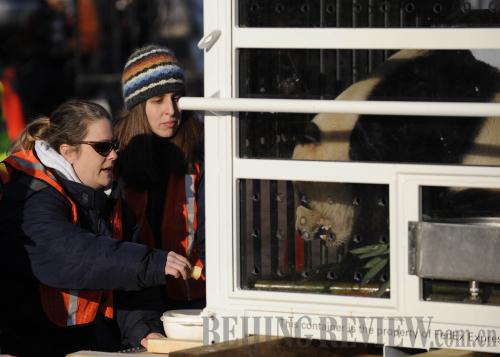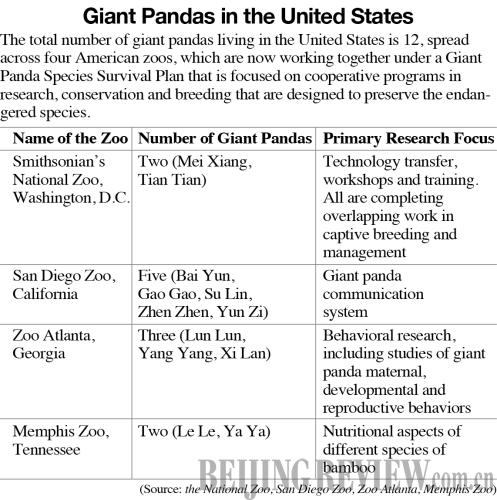|
 |
|
HARD TO SAY GOODBYE: On February 4, one of Tai Shan's zookeepers (left) says farewell to the panda bear just before it is aboard on a plane to China (ZHANG JUN) |
He is still considered to be a part of the lives of his fans, despite the fact that Tai Shan has become an adult panda that has entered his breeding stage.
"He's so cute. I'll miss him," Claire Ryland, a 7-year-old from Maryland, told ABC News.
Conservation efforts
Several zookeepers were chosen to accompany the panda to his new habitat and stay with him for at least one week during his transition.
"It'll be a loss not to have him in the building," said keeper Nicole Meese. She said that Tai Shan is needed to fulfill his role in a breeding program to save the endangered species.
Giant pandas are rare both in the wild and in captivity. China's most recent national giant panda survey reported that about 1,600 pandas survive in the wild today and are scattered around the rugged hills in the interior of China, mostly in Sichuan Province, but also in Gansu and Shaanxi provinces.
In the early to mid-20th century, habitat destruction left only a few isolated populations in the Qinling Mountains mainly in Shaanxi, as well as Sichuan and Gansu. These groups have become increasingly more fragmented, upping the chances of genetic inbreeding. To help preserve the unique species, the World Wildlife Fund and the Shaanxi Provincial Government have worked to create new natural reserves that allow pandas to move freely to help reunite isolated populations.
Zhang Liang, the Chinese Embassy's Minister-Councilor for Congressional Affairs, said the pandas would be moved to their new home as part of a conservation and breeding program.
Smith said the point of breeding giant pandas at zoos is to save the endangered animals. Panda reproduction has been difficult in captivity because females are notoriously picky when it comes to finding a mate. "The breeding window for pandas is tiny—once a year for only about 2 days, which explains their vulnerability," said Smith.
Scientists have been encouraged by recent gains. The San Diego Zoo sent two cubs back to China for breeding, one of which gave birth to seven cubs.
The Chinese have treasured giant pandas, the country's national symbol, for about 2,000 years.
"The Chinese have a very successful panda program," said Smith. "Since we partnered with them 10 years ago, the Chinese have had tremendous success caring for and breeding pandas, and they are close to reaching the very significant goal of having 300 pandas in captivity."

(Reporting from Washington, D.C.) | 